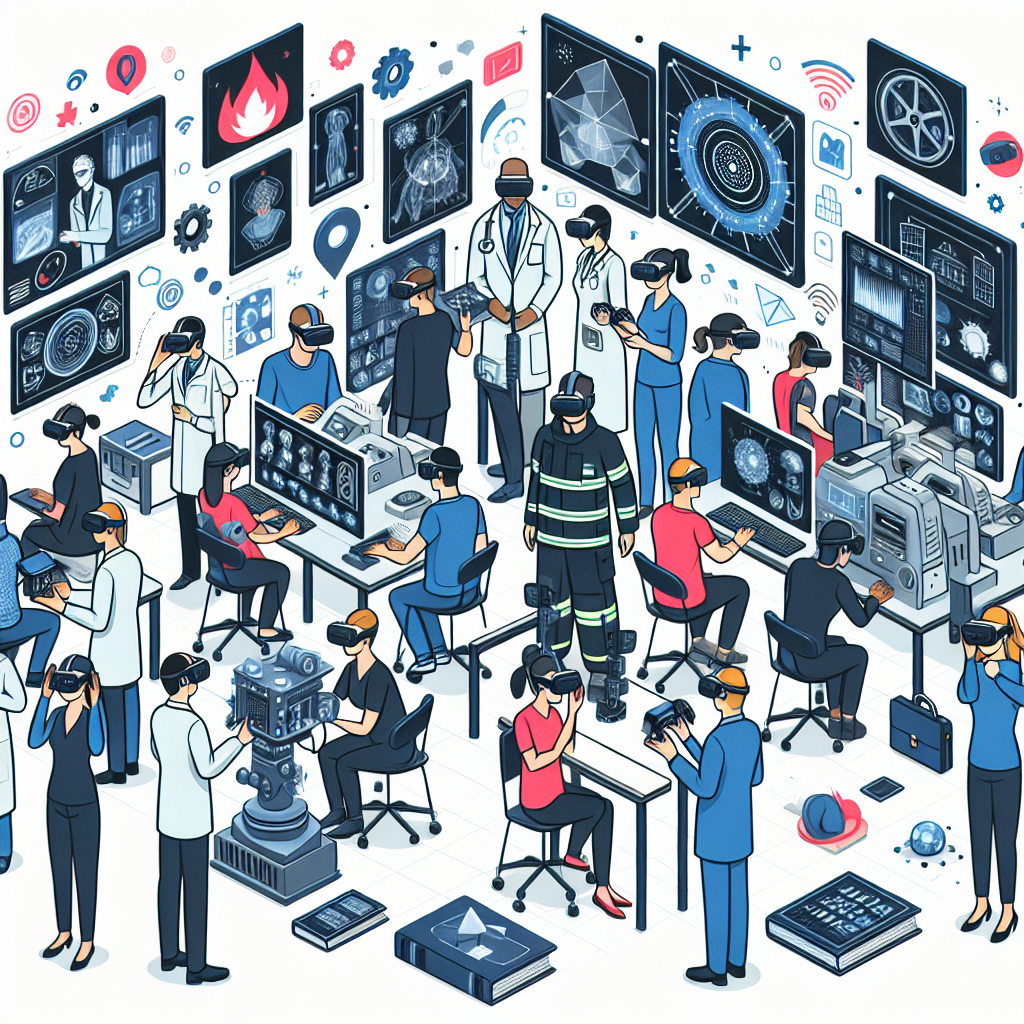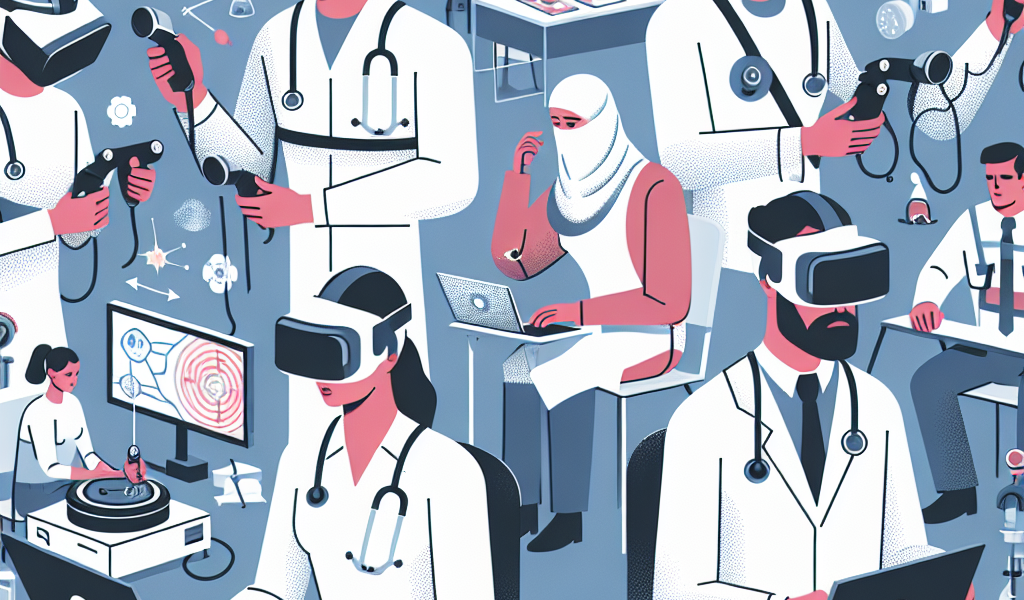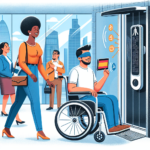-
Table of Contents
“Transforming Learning: Virtual Reality in Training and Development”
Introduction

Virtual reality (VR) has emerged as a transformative tool in the realm of training and development, offering immersive and interactive experiences that traditional methods cannot match. By simulating real-world environments and scenarios, VR enables learners to practice skills, make decisions, and experience outcomes in a controlled, risk-free setting. This technology enhances engagement, retention, and comprehension, making it particularly valuable in fields such as healthcare, aviation, military, and corporate training. As VR continues to evolve, its role in training and development is expected to expand, providing innovative solutions for skill acquisition, performance improvement, and professional growth.
Enhancing Employee Skills Through Immersive Virtual Reality Training
In today’s rapidly evolving technological landscape, companies are constantly seeking innovative ways to enhance employee skills and improve productivity. One such groundbreaking tool that has emerged is virtual reality (VR). This immersive technology is revolutionizing the way organizations approach training and development, offering a dynamic and engaging alternative to traditional methods. By simulating real-world scenarios, VR provides employees with hands-on experience in a controlled, risk-free environment, thereby accelerating learning and retention.
The appeal of VR training lies in its ability to create realistic, interactive experiences that engage multiple senses. Unlike conventional training programs that often rely on passive learning through lectures or videos, VR immerses employees in lifelike situations where they can practice and refine their skills. For instance, in industries such as healthcare, VR can simulate complex surgical procedures, allowing medical professionals to hone their techniques without the consequences of real-life errors. This not only boosts confidence but also ensures that employees are better prepared for actual challenges.
Moreover, VR training is highly adaptable and can be customized to meet the specific needs of different industries and roles. Whether it’s a firefighter practicing emergency response tactics or a customer service representative learning to handle difficult interactions, VR can replicate a wide range of scenarios. This flexibility makes it an invaluable tool for organizations looking to provide targeted, role-specific training. Additionally, VR can be updated easily to reflect new protocols or industry standards, ensuring that employees are always equipped with the latest knowledge and skills.
Another significant advantage of VR training is its ability to provide immediate feedback. In a virtual environment, employees can receive real-time assessments of their performance, allowing them to identify areas for improvement and make necessary adjustments on the spot. This instant feedback loop accelerates the learning process and helps employees achieve proficiency more quickly. Furthermore, the data collected during VR training sessions can be analyzed to gain insights into employee performance and identify trends or common challenges, enabling organizations to fine-tune their training programs for maximum effectiveness.
The immersive nature of VR also fosters greater engagement and motivation among employees. Traditional training methods can often be monotonous and fail to capture the attention of participants. In contrast, VR’s interactive and gamified elements make learning more enjoyable and stimulating. Employees are more likely to be invested in their training when it feels like an exciting experience rather than a mandatory chore. This heightened engagement translates to better retention of information and a more positive attitude towards continuous learning and development.
Despite its numerous benefits, the adoption of VR training is not without challenges. The initial investment in VR technology can be substantial, and organizations must weigh the costs against the potential return on investment. Additionally, there may be a learning curve for both trainers and trainees as they adapt to this new medium. However, as VR technology becomes more accessible and affordable, these barriers are likely to diminish, paving the way for wider adoption across various sectors.
In conclusion, virtual reality is poised to play a pivotal role in the future of training and development. Its ability to create immersive, realistic training experiences offers a powerful tool for enhancing employee skills and improving performance. As organizations continue to explore and invest in VR, they will unlock new possibilities for more effective and engaging training programs, ultimately driving growth and success in an increasingly competitive landscape.
Cost-Effective Training Solutions: The Benefits of Virtual Reality in Corporate Development
Virtual reality (VR) is revolutionizing the landscape of corporate training and development, offering cost-effective solutions that are both innovative and impactful. As companies strive to stay competitive in an ever-evolving market, the need for efficient and effective training methods has never been more critical. VR technology, with its immersive and interactive capabilities, is emerging as a game-changer in this domain.
One of the most significant advantages of VR in corporate training is its ability to simulate real-world scenarios without the associated risks and costs. Traditional training methods often require physical resources, travel expenses, and time away from the job, all of which can add up quickly. In contrast, VR allows employees to engage in realistic training exercises from the comfort of their office or even their home. This not only reduces costs but also minimizes downtime, ensuring that employees can continue to contribute to their roles while undergoing training.
Moreover, VR provides a level of engagement and retention that traditional methods often struggle to achieve. Studies have shown that immersive learning experiences can significantly enhance memory retention and understanding. When employees are placed in a virtual environment that mimics their actual work setting, they are more likely to retain the information and skills they acquire. This hands-on approach allows for immediate application and practice, reinforcing learning in a way that is both effective and enjoyable.
Transitioning to another key benefit, VR training can be customized to meet the specific needs of a company or individual. Whether it’s onboarding new hires, upskilling current employees, or preparing for high-stakes situations, VR can be tailored to address a wide range of training objectives. This flexibility ensures that training programs are relevant and aligned with organizational goals, ultimately leading to better performance and productivity.
Additionally, VR offers a safe environment for employees to make mistakes and learn from them without real-world consequences. In high-risk industries such as healthcare, manufacturing, or aviation, the ability to practice procedures and respond to emergencies in a virtual setting can be invaluable. This not only builds confidence but also prepares employees to handle real-life situations more effectively. The result is a workforce that is better equipped to perform their duties safely and efficiently.
Furthermore, VR training can be easily scaled to accommodate a growing workforce. As companies expand, the need for consistent and standardized training becomes more pressing. VR allows for the replication of training modules across multiple locations, ensuring that all employees receive the same high-quality instruction. This scalability is particularly beneficial for global organizations with diverse teams spread across different regions.
In addition to these practical benefits, VR training can also foster a culture of continuous learning and development. By integrating VR into their training programs, companies signal their commitment to innovation and employee growth. This can boost morale and engagement, as employees feel valued and supported in their professional development. The immersive nature of VR also makes learning more enjoyable, which can lead to higher participation rates and a more motivated workforce.
In conclusion, the adoption of virtual reality in corporate training and development offers a multitude of benefits that extend beyond cost savings. From enhanced engagement and retention to customized and scalable solutions, VR is transforming the way companies approach employee training. As technology continues to advance, the potential for VR in this space will only grow, making it an indispensable tool for forward-thinking organizations.
Virtual Reality Simulations: Revolutionizing Safety and Compliance Training
Virtual reality (VR) is no longer a futuristic concept confined to the realms of science fiction. It has become a transformative tool in various industries, particularly in the field of training and development. One of the most significant applications of VR is in safety and compliance training, where it is revolutionizing traditional methods and offering unprecedented benefits.
To begin with, VR simulations provide a highly immersive and interactive environment that traditional training methods simply cannot match. Trainees can be placed in realistic scenarios that mimic real-world situations, allowing them to practice and hone their skills in a safe and controlled setting. For instance, in industries such as construction, manufacturing, and healthcare, where safety is paramount, VR can simulate hazardous conditions without exposing trainees to actual risks. This not only enhances learning but also significantly reduces the likelihood of accidents and injuries.
Moreover, VR training modules can be customized to meet the specific needs of different organizations. This flexibility ensures that the training is relevant and up-to-date, addressing the unique challenges and compliance requirements of each industry. For example, in the oil and gas sector, VR can simulate emergency response scenarios, enabling workers to practice evacuation procedures and equipment handling in a virtual environment. This level of customization ensures that employees are better prepared to handle real-life situations, thereby improving overall safety and compliance.
Another advantage of VR simulations is the ability to track and measure trainee performance in real-time. Advanced analytics can provide detailed insights into how trainees are performing, identifying areas where they excel and where they may need additional support. This data-driven approach allows trainers to tailor their instruction to individual needs, ensuring that each trainee receives the most effective training possible. Additionally, the ability to replay and review VR simulations enables trainees to learn from their mistakes and continuously improve their skills.
Furthermore, VR training can be more engaging and enjoyable for trainees compared to traditional methods. The interactive nature of VR keeps trainees actively involved in the learning process, making it easier for them to retain information and apply it in real-world situations. This increased engagement can lead to higher levels of motivation and job satisfaction, which in turn can improve overall productivity and performance.
In addition to these benefits, VR training can also be more cost-effective in the long run. While the initial investment in VR technology may be significant, the savings in terms of reduced training time, lower accident rates, and improved compliance can be substantial. For example, traditional training methods often require physical resources, travel, and downtime, all of which can be costly. In contrast, VR training can be conducted on-site or remotely, reducing the need for physical resources and minimizing disruptions to daily operations.
In conclusion, virtual reality is playing a pivotal role in transforming safety and compliance training across various industries. By providing immersive, customizable, and data-driven training experiences, VR is helping organizations enhance safety, improve compliance, and achieve better training outcomes. As technology continues to advance, the potential for VR in training and development is only set to grow, offering even more innovative solutions to meet the evolving needs of the modern workforce.
Conclusion
Virtual Reality (VR) plays a transformative role in training and development by providing immersive, interactive, and realistic environments that enhance learning experiences. It allows for safe, cost-effective, and scalable training solutions across various industries, from healthcare to aviation. VR facilitates experiential learning, improves retention rates, and enables the practice of complex skills without real-world consequences. Additionally, it supports remote training, making it accessible to a global workforce. Overall, VR is revolutionizing the way organizations approach skill development and employee training, leading to more effective and engaging learning outcomes.





